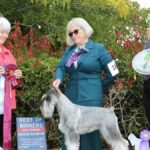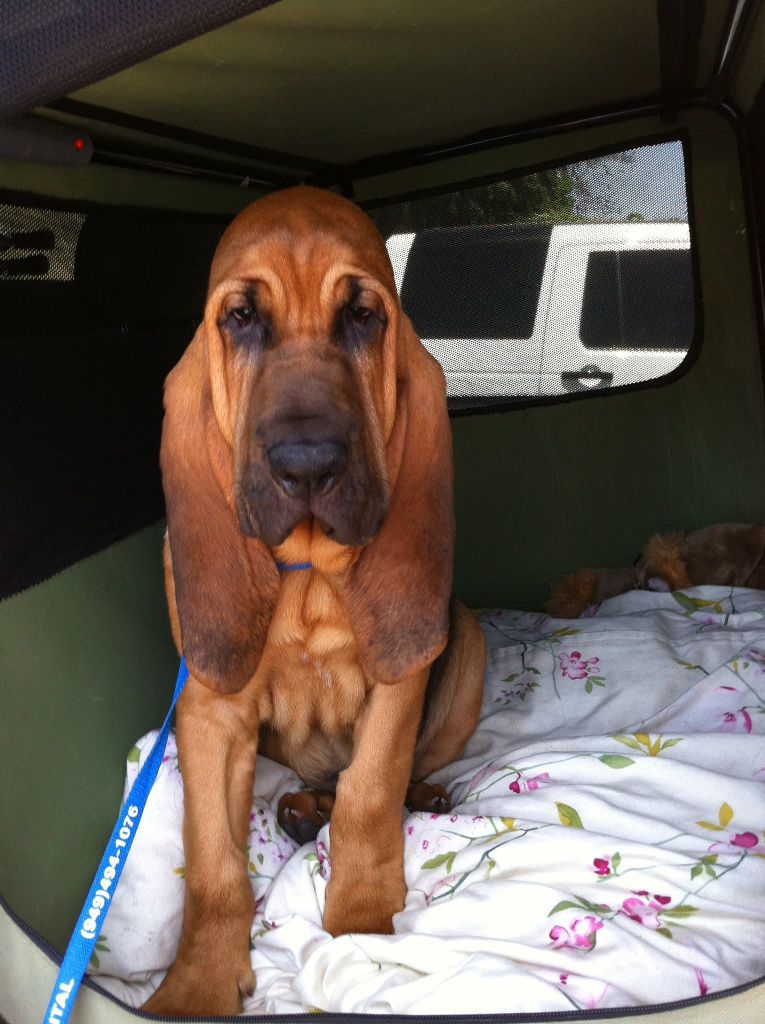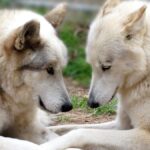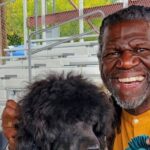Interview with Quiet Creek Bloodhounds | Susan LaCroix Hamil – AKC 2021 Breeder of the Year Hound Group Honoree.
1. The Bloodhound is an iconic breed that is widely-known, despite its relative scarcity. What is it about the breed that has sustained your interest for so long?
I admire Bloodhounds for their strength, tenacity, and intelligence. They are an iconic breed and a progenitor of other breeds that we see today. The phenotype of a large, strong, and well-furnished hunting hound, the Bloodhound (or in France, Chien du St Hubert) has been depicted in paintings, tapestry, bronze, and stone for hundreds and hundreds of years. They have always been a pack hunting hound with legendary scenting ability. Now we can utilize that incredible, cold-scenting ability, employing a single hound in search and rescue, and in law enforcement. Watching them work a scent trail, and watching them interact with each other and with humans in smart, crafty, and sometimes amusing ways is still fascinating to me. Even after 50 years of living with them, I still learn from them every day.
2. Breeding dogs requires the vision of an artist, the curiosity of a scientist, and the commitment of a philosopher. As a breeder, do you view yourself as an artist, a scientist or a philosopher? Maybe you’re a combination of all three?
Breeding dogs successfully, over time, requires a mission, a vision, and a plan for the long term. I view myself as a student of all dogs and of Bloodhounds in particular. I have attended every Bloodhound National except one since 1978. I have judged and traveled in Europe, attending club shows and World Dog Shows, always looking for hounds that exemplify the Bloodhound, studying their pedigrees and offspring.
I evaluate all of my dogs in relation to the standard and the current population of Bloodhounds. What do I need to improve? What is the breed lacking overall? What are the strong points that need to be preserved? Keeping my breeding program to the true and original purpose of the Bloodhound as a working hound is my mission.
A stud dog that is prepotent in passing those enhancements on to his offspring is fortunate indeed. Having a bitch line that can pass her sound temperament, structure, and health on to her offspring is truly a treasure. I have been fortunate to have had both.
3. In dogs, selection is key. How do you select your sire and dam combinations? How do you select which puppies will appear in the show ring?
In selecting breeding stock, I look for prepotency behind both sire and dam. By now (after 40-plus years), I have seen many of the dogs found in most pedigrees—and can go back for generations. These days, no one is producing sufficient numbers of puppies from different combinations of sires and dams. Evaluating prepotency (thus greater predictability) is becoming more and more difficult. This makes going “outside” of my most dependable individuals and their offspring more of a gamble.
I have used “outside” hounds that share related pedigrees and traits in common. I have gone outside to bring in something completely new. This has provided some spectacular successes as well as some dismal and disappointing dead-ends.
4. The Breed Standard is the preservation breeder’s most essential tool. What are your thoughts on the importance of breeding to the standard and presenting the breed in the ring accordingly?
The current AKC Standard for the Bloodhound is essentially the same as the original English Standard written by Edwin Brough and his contemporaries in the 1880s.
The study of breed origin, original working purpose, and the history of how the current Standards (worldwide for the Bloodhound) were crafted imparts a much greater understanding of the phrases and emphasis, rather than simply using the words in the Standard as a one-dimensional template.
The Bloodhound Standard states in one paragraph everything that separates the Bloodhound from any other scenthound:
“General Character: The Bloodhound possesses, in a most marked degree, every point and characteristic of those dogs which hunt together by scent (Sagaces). He is very powerful, and stands over more ground than is usual with hounds of other breeds. The skin is thin to the touch and extremely loose, this being more especially noticeable about the head and neck, where it hangs in deep folds.”
The remainder of the Standard puts a fine finish on specific attributes that further separate the Bloodhound from all others. Enhancing the fine points can make the difference between a great hound and an above average one.
Bloodhounds are now a low entry breed in Conformation. This puts the breed at great risk of losing essential characteristics, both physical and behavioral. With little or no emphasis on the Standard, defining physical characteristics may be lost forever along with the Bloodhound’s unique scenting ability.
5. Today’s breeders have found themselves on the defensive from public criticism and from legislative proposals that would restrict breeding practices. In your opinion, what can preservation breeders do to counter the anti-purebred rhetoric that has taken hold in this country?
Preserving Breeds: I remind people that Bloodhounds can find lost children and put criminals behind bars. Their unique scenting ability is generally well-recognized by the public. The challenge is to convince the public that this ability is not a happy accident, but the result of managed breeding programs requiring a sufficient number of dogs to maintain a viable breeding population.
Pointing to the breeding programs for service dogs (we have several successful ones in California) also helps to start a positive and thoughtful conversation about the preservation of purpose-bred dogs.
The AKC Veterinary Outreach Program, along with the AKC Legislative Department and AKC Canine Health Foundation, has achieved success in overcoming prejudice and misconceptions regarding purpose-bred dogs. Their work is ongoing and is vital to create an understanding of heath and genetics in breeding populations among veterinarians and the public, including legislators.
Costs: There are few people who can afford to keep large numbers of dogs due to space limitations and expense. The rising cost of veterinary care and competition expenses are exceeding the limits of most family finances.
Dog Limits: An even greater challenge is dog limits. You cannot create or maintain a “line” of dogs with a 3-4 dog limit. People today are only going to breed the dogs they have and once the limit is reached, no new dogs can be brought in until the current dogs pass away. With these constraints, it is very difficult to interest new people into becoming true breeders.








